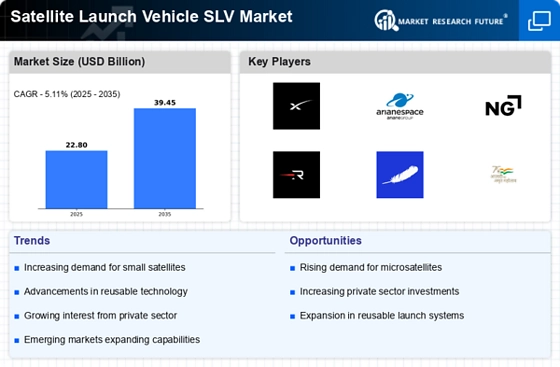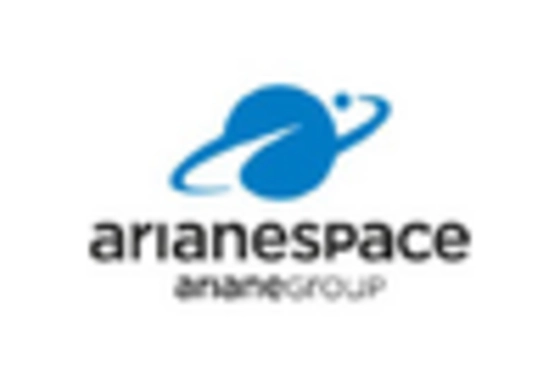Emergence of New Spaceports
The establishment of new spaceports is a pivotal driver in the Satellite Launch Vehicle SLV Market. As the demand for satellite launches increases, the need for additional launch facilities becomes apparent. New spaceports are being developed in various regions, providing strategic locations for launching satellites into orbit. These facilities are designed to accommodate a range of launch vehicles, including small satellite launchers, which are gaining popularity due to their cost-effectiveness. The proliferation of spaceports not only enhances launch capacity but also fosters regional economic development by creating jobs and attracting investment. This trend is likely to contribute to the overall growth of the Satellite Launch Vehicle SLV Market, as more players enter the industry and seek to capitalize on the expanding opportunities.
Growing Demand for Satellite Services
The Satellite Launch Vehicle SLV Market is experiencing a notable increase in demand for satellite services, driven by the rising need for communication, Earth observation, and scientific research. As nations and private entities invest in satellite technology, the demand for reliable launch services escalates. According to recent data, the satellite services market is projected to reach approximately 500 billion USD by 2026, indicating a robust growth trajectory. This surge in demand necessitates the development of advanced Satellite Launch Vehicles capable of accommodating various payloads, thereby propelling the SLV market forward. The increasing reliance on satellite technology for applications such as broadband internet and weather forecasting further underscores the importance of efficient launch solutions in the Satellite Launch Vehicle SLV Market.
Increasing Investment in Space Exploration
The Satellite Launch Vehicle SLV Market is witnessing a surge in investment aimed at space exploration initiatives. Governments and private companies are allocating substantial budgets to develop new technologies and launch capabilities. For example, the United States has committed billions of dollars to NASA's Artemis program, which aims to return humans to the Moon and eventually send astronauts to Mars. This influx of funding not only supports the development of advanced Satellite Launch Vehicles but also stimulates the entire space economy, including satellite manufacturing and ground support services. As exploration missions become more ambitious, the demand for reliable and efficient launch services is expected to rise, further driving growth in the Satellite Launch Vehicle SLV Market.
Technological Advancements in Launch Vehicles
Technological innovations are significantly shaping the Satellite Launch Vehicle SLV Market. The advent of reusable launch systems, enhanced propulsion technologies, and improved payload integration techniques are revolutionizing the efficiency and cost-effectiveness of satellite launches. For instance, advancements in materials science have led to lighter and more durable components, which can enhance the performance of launch vehicles. Furthermore, the integration of artificial intelligence and automation in launch operations is streamlining processes and reducing the risk of human error. As these technologies continue to evolve, they are likely to attract more stakeholders to the Satellite Launch Vehicle SLV Market, fostering a competitive landscape that encourages further innovation and investment.
Regulatory Support for Commercial Launch Services
Regulatory frameworks are evolving to support the growth of the Satellite Launch Vehicle SLV Market. Governments are recognizing the importance of commercial launch services in advancing national interests and fostering innovation. Streamlined licensing processes and supportive policies are being implemented to facilitate the entry of new players into the market. For instance, the Federal Aviation Administration in the United States has been working to simplify the regulatory environment for commercial space launches, which encourages investment and competition. As regulations become more favorable, the Satellite Launch Vehicle SLV Market is likely to see an influx of new entrants, enhancing competition and driving technological advancements in launch services.

















Leave a Comment